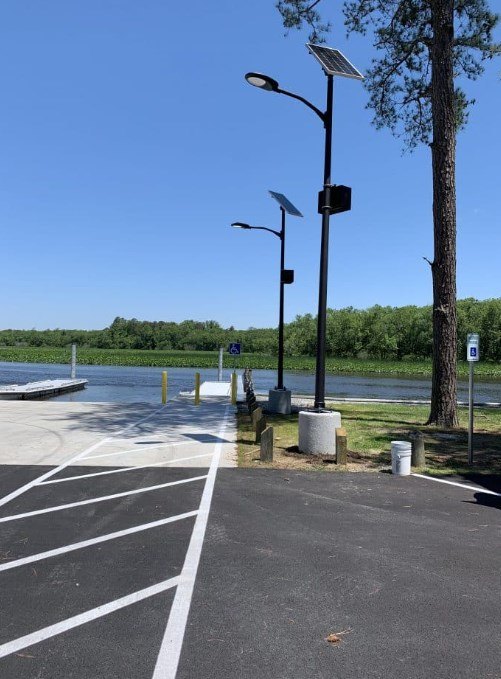Case Study: How Solar Lights Improved Safety in Rural CommunitiesPosted by Stephen Shickadance in Inspiring Projects. Solar Lighting Economics. Applications of Solar Lighting. Solar Lighting Design.Rural communities often face challenges regarding infrastructure, particularly in areas where access to utilities is limited. This was the case for Phillips Landing, a wildlife park and boating access point to the Nanticoke River in Laurel, Delaware. As part of an expansion project, the park upgraded its amenities with floating docks, kayak launches, a paved parking area, and a stone path. However, one major issue stood out—there was insufficient lighting, and the remote location made traditional lighting options both expensive and impractical. The solution? Solar-powered lights.
This case study highlights how solar lighting improved safety in a rural community, allowing for cost-effective illumination without disrupting the natural environment or the project's budget. The ChallengePhillips Landing is a hub for boaters, fishermen, and nature enthusiasts, many arriving before dawn or returning after sunset. The park’s expansion included new amenities, but with no power lines nearby, providing adequate lighting for the newly paved parking lot and surrounding areas posed a significant challenge. Without lighting, navigating the park’s paths and parking areas at night became difficult and unsafe, especially for boaters coming in or out of the river. The project’s overall budget was already nearing the million-dollar mark, and trenching for electrical power lines would have added thousands more in costs. Trenching would also have disrupted the natural park grounds, potentially requiring closures that would have frustrated the community and harmed the park’s ecosystem. The Solar Lighting SolutionFaced with the need for a cost-effective, environmentally friendly, and efficient solution, the project managers for Phillips Landing turned to Greenshine New Energy for help. Greenshine proposed the installation of Brighta 40 solar LED lights, specifically designed to provide off-grid lighting without the need for electrical infrastructure. These lights were the perfect solution for this rural park due to their:
Greenshine installed three Brighta 40 solar LED lights, strategically placed around the paved parking lot and key areas of the park. These solar lights provided the necessary illumination for visitors to safely navigate the parking area and paths, especially during the early morning and late evening hours when visibility was otherwise limited. Results and Impact1. Improved Safety 2. Cost Savings 3. Quick and Low-Impact Installation 4. Environmentally Friendly Solution ConclusionThe installation of solar lighting at Phillips Landing is a prime example of how rural communities can benefit from innovative, cost-effective lighting solutions. By leveraging Greenshine New Energy’s Brighta 40 solar lights, Phillips Landing not only enhanced the safety and accessibility of the park but also avoided the environmental and financial challenges posed by traditional grid-connected lighting. This case study demonstrates the potential for solar lighting to transform public spaces in rural areas, providing safe, reliable, and sustainable lighting without the high costs and disruptions associated with traditional infrastructure projects. Thanks to this project, Phillips Landing can continue to serve the local community and attract visitors while preserving the natural beauty and integrity of the park. As more rural communities explore the benefits of solar lighting, Phillips Landing stands as a successful model for others looking to enhance public safety while maintaining budget-friendly and eco-conscious solutions.
Inspiring Projects
Solar Lighting Economics
Applications of Solar Lighting
Solar Lighting Design
|
ArchivesNo Archives Categories
Want More Info? |
LATEST NEWS & ARTICLES

